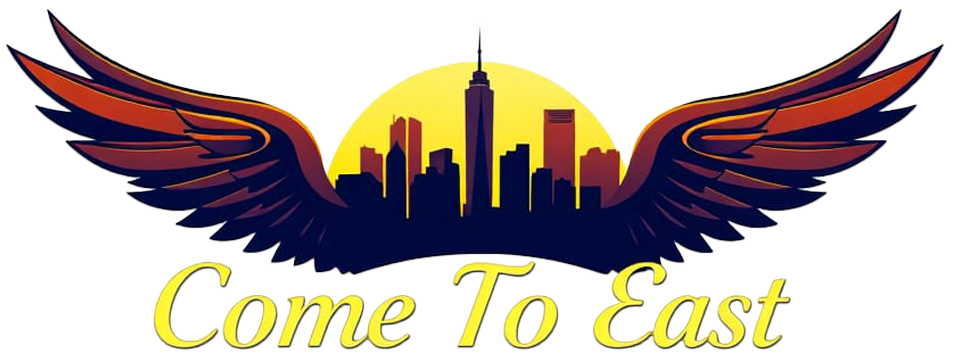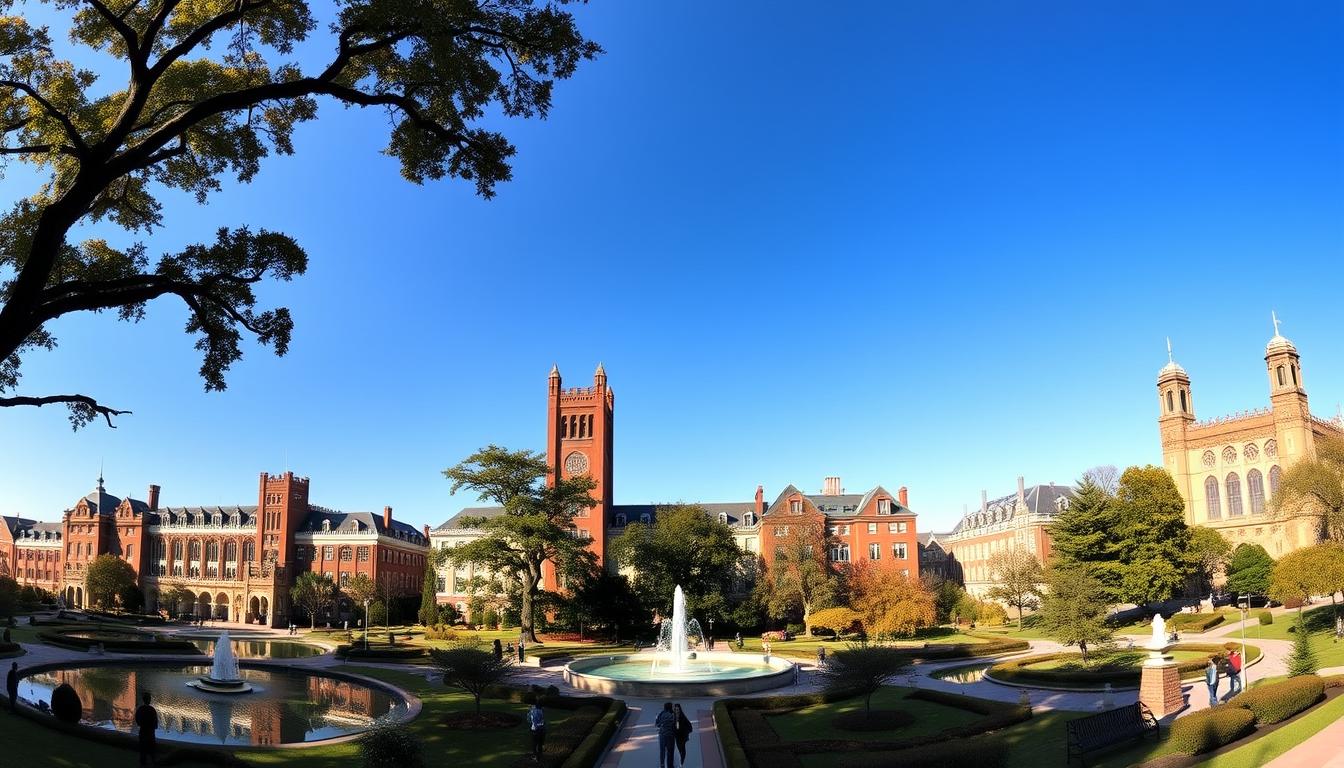Choosing the right college shapes every part of a student’s future. On the East Coast, several institutions continue to set national academic standards. Each one offers a unique blend of research strength, academic rigor, campus life, and alumni support. Some lean toward science and innovation. Others focus on arts, leadership, or public policy.
The five colleges listed in this guide lead in national rankings for 2025. Each one stands at the forefront of higher education, with proven excellence across multiple fields. Students drawn to cutting-edge technology, Ivy League tradition, or intellectual exploration will find strong opportunities at each institution.
1. Princeton University

| Location | Princeton, New Jersey |
| Founded | 1746 |
| Enrollment | ~5,300 undergraduates |
| Student-to-Faculty Ratio | 5:1 |
| Acceptance Rate | <5% |
| Financial Aid | No-loan policy, meets 100% of need |
| Top Majors | Public Affairs, Computer Science, Engineering, Economics |
| Athletics | NCAA Division I (Ivy League) |
Founded in 1746, Princeton University stands as one of the oldest and most respected institutions in the United States. Located in Princeton, New Jersey, it offers a highly selective undergraduate experience rooted in academic depth and a strong commitment to research.
The university’s serene, Gothic-style campus provides a focused learning environment just an hour from both New York City and Philadelphia. Princeton consistently ranks at the top of national listings for its undergraduate teaching, financial aid programs, and faculty distinction.
Academic Excellence
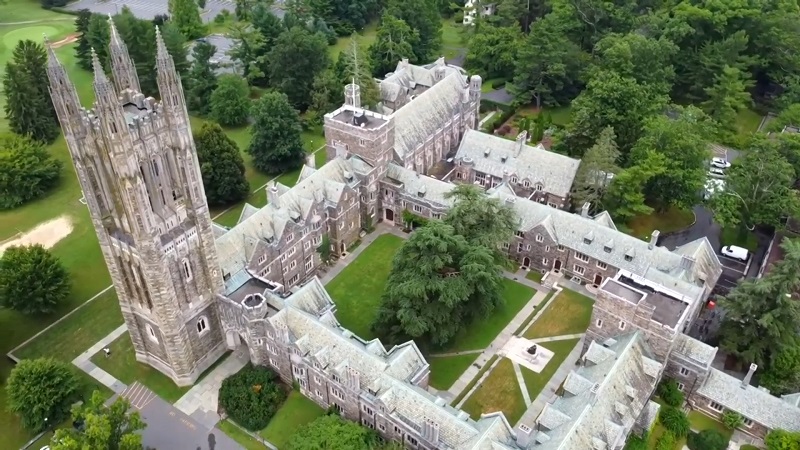
Princeton limits enrollment to foster an intimate learning culture. The student-to-faculty ratio remains 5:1. Every undergraduate must complete a senior thesis or an independent research project, depending on their major. The university’s curriculum emphasizes writing, original thought, and interdisciplinary inquiry.
Top programs include:
- Public and International Affairs
- Computer Science
- Economics
- Engineering and Applied Science
- Physics
The faculty includes Nobel laureates, MacArthur fellows, and leading thinkers across many disciplines. Undergraduate teaching remains a priority, with small class sizes and accessible instructors.
Campus and Student Life
Princeton provides a strong residential college system that defines campus culture. Each student lives in one of six residential colleges that serve as hubs for dining, advising, and social activities. There are no fraternities or sororities. Campus life centers around academic exploration, traditions like Reunions Weekend, and student-led groups covering arts, service, debate, and entrepreneurship.
Athletics are part of campus life but never dominate. Princeton competes in NCAA Division I Ivy League sports. Most students participate in intramural or club sports instead of varsity teams.
Financial Aid and Admissions
Princeton offers one of the most generous financial aid programs in the country. The university follows a no-loan policy. Financial aid comes in the form of grants, not loans. Families earning up to $100,000 typically pay nothing. Even students from higher-income households often receive substantial support.
Admission remains extremely competitive. The acceptance rate for the Class of 2029 fell below 5 percent. Princeton uses a holistic review, considering academic achievement, character, service, and leadership.
Career Support and Alumni Network
Students benefit from a robust network of alumni and career advisors. More than 80 percent of students pursue internships during their time at Princeton. The Center for Career Development provides support for fellowships, graduate school, and job placements. Princeton graduates have strong representation in academia, public policy, business, technology, and the nonprofit sector.
2. Massachusetts Institute of Technology (MIT)
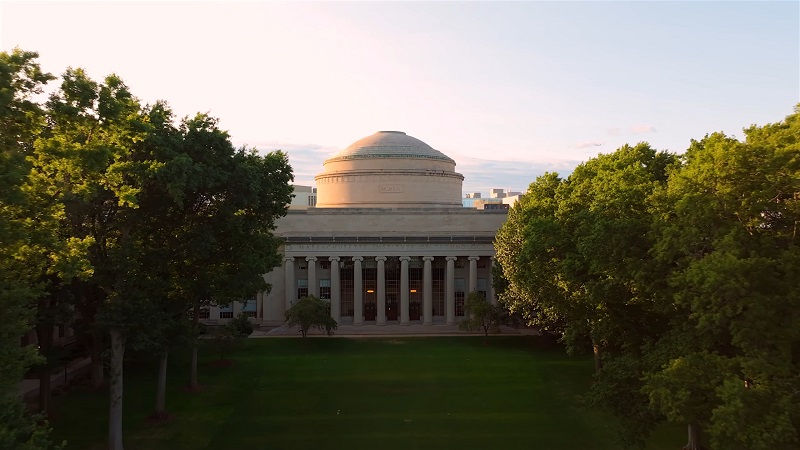
| Location | Cambridge, Massachusetts |
| Founded | 1861 |
| Enrollment | ~4,700 undergraduates |
| Student-to-Faculty Ratio | 3:1 |
| Acceptance Rate | ~4% |
| Financial Aid | Meets 100% of demonstrated need |
| Top Majors | Engineering, Computer Science, Physics, Mathematics |
| Athletics | NCAA Division III (NEWMAC) |
Founded in 1861, the Massachusetts Institute of Technology (MIT) has built a global reputation as a leader in science, engineering, and innovation. Located along the Charles River in Cambridge, the campus stretches across cutting-edge labs, start-up incubators, and research facilities.
MIT has produced dozens of Nobel laureates, astronauts, tech founders, and economists. It continues to rank among the top institutions globally for its focus on discovery, invention, and practical application of knowledge.
Academic Excellence
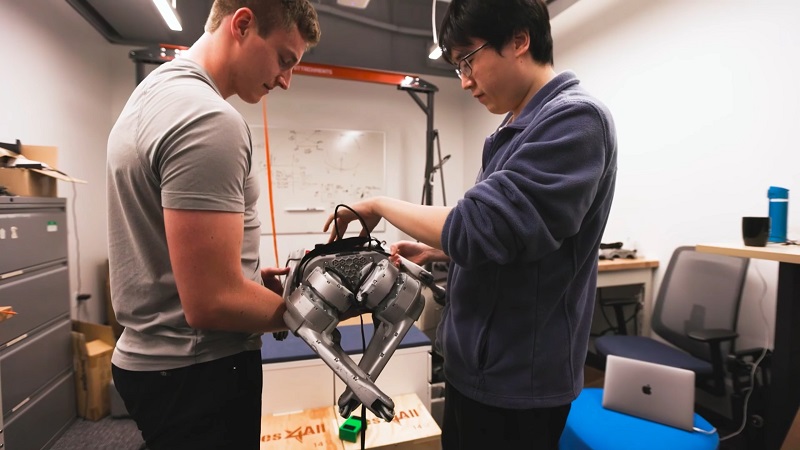
MIT organizes its academic structure around five schools, with a strong emphasis on STEM fields. Students at MIT engage directly in research from their first year. The Undergraduate Research Opportunities Program (UROP) allows students to work alongside professors and graduate students on groundbreaking studies.
Top-ranked departments include:
- Electrical Engineering and Computer Science
- Mechanical Engineering
- Mathematics
- Aerospace Engineering
- Physics
MIT encourages collaboration across fields, blending theoretical problem-solving with real-world design. Each course challenges students to explore problems that stretch conventional boundaries.
Campus and Student Life
Campus life at MIT reflects its creative and technical environment. Housing is guaranteed for all four years, and students often choose residence halls that match their personalities. Each dorm has a distinct culture, supported by peer mentoring and faculty engagement.
Students participate in hundreds of clubs covering robotics, policy, music, entrepreneurship, and more. The MIT Museum, science festivals, and arts performances enrich the broader experience. Campus traditions include the legendary “hacks” where students carry out complex and playful engineering feats.
Though MIT competes in NCAA Division III sports, its athletic culture leans toward personal fitness and recreational leagues. The Zesiger Sports Center and various wellness programs support student health and balance.
Financial Aid and Admissions
MIT follows a need-blind admissions process and meets full financial need for all admitted students. Nearly 60 percent of undergraduates receive aid. Students from families earning under $140,000 often pay reduced costs, and those under $75,000 usually pay nothing.
The admissions process evaluates grades, test scores, creativity, initiative, and problem-solving ability. MIT values curiosity and originality over perfection. Each application is reviewed by committees trained to see potential in both conventional and unconventional achievements.
Career Support and Alumni Network
MIT graduates step directly into leadership roles across industries. The MIT Global Education and Career Development office provides tailored support for job searches, internships, fellowships, and graduate school planning. Employers regularly recruit on campus, including startups, government agencies, and Fortune 500 companies.
More than one-third of undergraduates pursue graduate studies immediately after graduation. The alumni network spans influential figures in Silicon Valley, finance, healthcare, and space exploration.
3. Harvard University

| Location | Cambridge, Massachusetts |
| Founded | 1636 |
| Enrollment | ~7,200 undergraduates |
| Student-to-Faculty Ratio | 7:1 |
| Acceptance Rate | ~3.5% |
| Financial Aid | Meets 100% of demonstrated need |
| Top Majors | Social Sciences, Biology, Economics, Government |
| Athletics | NCAA Division I (Ivy League) |
Harvard University holds the distinction of being the oldest institution of higher education in the United States. Located in Cambridge, Massachusetts, across the river from downtown Boston, Harvard operates within a vibrant academic and cultural landscape.
It has consistently ranked at or near the top of every national and global ranking. The university stands as a symbol of academic prestige, political influence, and intellectual tradition.
Academic Excellence
Harvard offers a liberal arts curriculum supported by a flexible academic plan known as the Program in General Education. Students select courses across multiple fields, developing intellectual breadth before focusing on a concentration.
Leading areas of study include:
- Social Studies
- Economics
- Biological Sciences
- Government
- Applied Mathematics
Faculty at Harvard include Pulitzer Prize winners, Nobel laureates, and global policy advisers. Undergraduate classes maintain an intimate scale despite the university’s size. Most seminars have fewer than 15 students. The emphasis on original research, especially in the senior thesis, supports both graduate preparation and real-world application.
Campus and Student Life
Harvard’s historic campus blends classic architecture with modern facilities. First-year students live in Harvard Yard and then transition into one of twelve residential houses. Each house provides dining, advising, cultural activities, and leadership programs. This house system forms the foundation of student life.
Clubs, journals, theater troupes, student governments, and music groups offer students hundreds of outlets. The Harvard Crimson, WHRB radio, and the Hasty Pudding Club have national recognition. Every part of campus life integrates tradition with current global issues and student interests.
Athletics form a visible part of the campus environment. Harvard supports 42 varsity sports and numerous intramural leagues. Facilities include the Malkin Athletic Center and Harvard Stadium.
Financial Aid and Admissions
Harvard maintains one of the most generous financial aid policies in higher education. Families earning under $85,000 typically pay nothing. Students from families earning up to $150,000 often receive large grants. No loans are part of any aid packages.
Admissions require strong academics, intellectual energy, leadership, and engagement beyond the classroom. Harvard uses a holistic approach, but only a small number of applicants are selected. Fewer than 4 out of every 100 students are admitted.
Career Support and Alumni Network
Harvard’s Office of Career Services provides access to internships, global fellowships, graduate school advising, and employer networking. Students receive support across every stage of career planning. More than 90 percent complete internships. Over half pursue postgraduate study within one year.
The alumni network includes presidents, Nobel Prize winners, diplomats, founders, and leading scholars. Harvard graduates often take on leadership roles across law, medicine, finance, arts, and academia.
4. Yale University
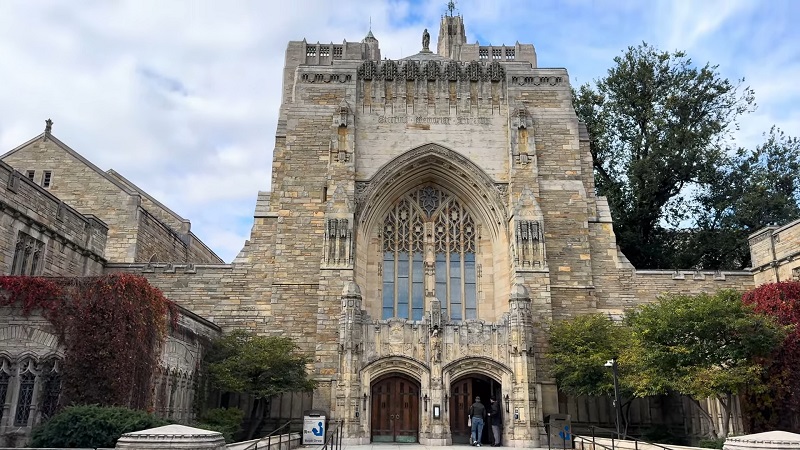
| Location | New Haven, Connecticut |
| Founded | 1701 |
| Enrollment | ~6,600 undergraduates |
| Student-to-Faculty Ratio | 6:1 |
| Acceptance Rate | ~4.5% |
| Financial Aid | Meets 100% of demonstrated need |
| Top Majors | Political Science, History, Economics, Psychology |
| Athletics | NCAA Division I (Ivy League) |
Yale University stands among the most respected academic institutions in the world. Located in New Haven, Connecticut, its historic Gothic-style campus creates an academic setting defined by beauty, tradition, and scholarship. Yale blends humanities and social sciences with cutting-edge scientific research.
It draws students with interests in law, public service, creative writing, and international affairs. Its deep roots in American history match its global academic reach.
Academic Excellence
Yale’s undergraduate program emphasizes original thought, discussion-based learning, and academic exploration. The curriculum allows students to sample courses across departments before selecting a major. Every student must complete courses in writing, quantitative reasoning, foreign language, and science.
Highly regarded programs include:
- Political Science
- Global Affairs
- History
- English
- Cognitive Science
The Directed Studies program offers first-year students a selective, intensive course of study in philosophy, literature, and historical thought. The university encourages research across all majors, including independent study projects and faculty-guided work.
Campus and Student Life
Yale features a renowned residential college system. Students are randomly assigned to one of fourteen colleges, each with its own dean, social events, seminars, and dining hall. This structure provides close-knit communities within the larger university.
Cultural opportunities shape student life. The Yale Repertory Theatre, Yale Daily News, and student-run a cappella groups like the Whiffenpoofs offer performance and media experience. Yale students participate in more than 500 organizations.
The university supports student wellness through extensive physical education facilities, mental health services, and peer support networks. Varsity sports play a central role, especially the Harvard-Yale football rivalry, but most students prefer recreational clubs and intramurals.
Financial Aid and Admissions
Yale meets full financial need without loans. Families earning under $75,000 typically pay no tuition. Aid packages combine scholarships and campus jobs. More than 60 percent of undergraduates receive financial support.
Admission to Yale remains highly competitive. The process reviews academic strength, personal essays, teacher recommendations, and a record of contribution to community. The university seeks students who will use their education to improve the world through leadership, creativity, and service.
Career Support and Alumni Network
Yale’s Office of Career Strategy offers individualized coaching, workshops, internship placements, and global fellowship support. About 85 percent of students complete internships. Alumni play a key role in mentoring and job connections. The Yale Alumni Association spans every sector of society.
Many graduates pursue law, medicine, international affairs, and creative careers. The university’s emphasis on writing, analysis, and ethical responsibility prepares students for leadership.
5. Brown University
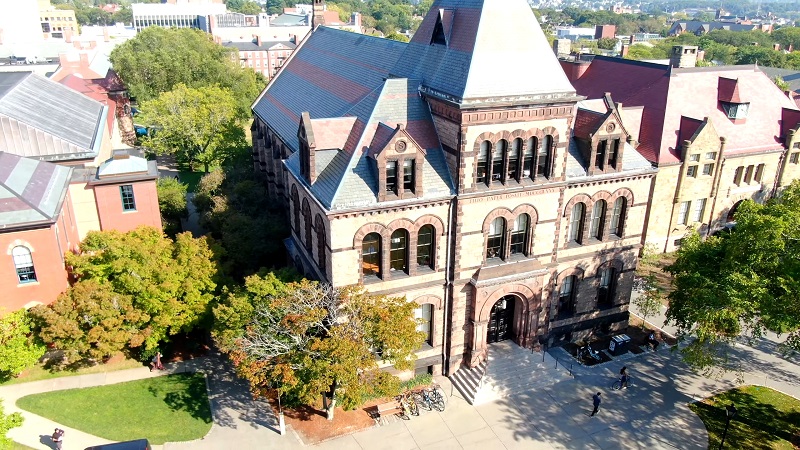
| Location | Providence, Rhode Island |
| Founded | 1764 |
| Enrollment | ~7,200 undergraduates |
| Student-to-Faculty Ratio | 6:1 |
| Acceptance Rate | ~5% |
| Financial Aid | Meets 100% of demonstrated need |
| Top Majors | Computer Science, International Relations, Economics, Biology |
| Athletics | NCAA Division I (Ivy League) |
Brown University offers a distinct academic model that sets it apart from every other Ivy League institution. Located in Providence, Rhode Island, Brown promotes intellectual independence through its Open Curriculum. This model gives students full responsibility for designing their course of study without required core classes.
The campus blends classical architecture with modern research labs and a creative student culture built around self-direction.
Academic Excellence
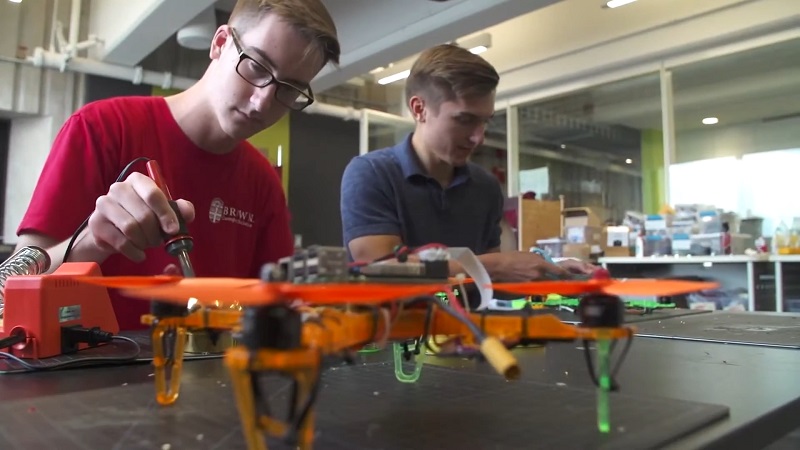
Brown’s Open Curriculum allows undergraduates to explore subjects freely and focus deeply on their personal interests. Students are not required to take general education courses. Instead, they choose their classes with guidance from faculty and academic advisers. This freedom cultivates intellectual passion and initiative.
Programs that consistently stand out include:
- Computer Science
- Literary Arts
- International Relations
- Neuroscience
- Environmental Studies
Brown also offers strong dual-degree programs with the Rhode Island School of Design and an eight-year Program in Liberal Medical Education (PLME), allowing students to earn both undergraduate and medical degrees.
Campus and Student Life
The university’s location on College Hill connects students to a historic New England city with art galleries, parks, and restaurants. Brown’s campus supports a relaxed, collaborative culture. Students organize lectures, performances, and political discussions throughout the year. With over 400 student organizations, the university promotes wide involvement.
Every student is assigned to a residence hall, with themed housing available for cultural groups and academic communities. Students often form deep connections within their residential community and carry those relationships through their academic journey.
Athletics and wellness activities include intramural leagues, club sports, and varsity teams. Brown competes in the Ivy League but emphasizes participation and personal growth over athletic pressure.
Financial Aid and Admissions
Brown uses a need-blind admissions policy and commits to meeting the full demonstrated financial need of all students. About 45 percent of undergraduates receive aid. Students from families earning under $60,000 generally receive aid that covers the full cost of attendance.
Admission to Brown focuses on a student’s capacity for original thinking, curiosity, and personal growth. The university places strong emphasis on essays, recommendations, and a demonstrated interest in using education for meaningful contribution.
Career Support and Alumni Network
The CareerLAB offers career counseling, resume assistance, and access to internships and research opportunities. Many students take part in global fellowship programs, and Brown’s LINK Awards fund unpaid summer internships around the world.
The alumni network spans public health, tech, writing, and social entrepreneurship. Notable alumni include authors, founders, U.S. senators, and global activists.
Conclusion
For 2025, the East Coast continues to lead in higher education through institutions that shape the future across science, politics, arts, and public life. The path each student takes at one of these colleges will set the foundation for a lifetime of inquiry, impact, and achievement.
